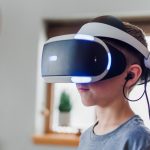
Dental anxiety is common among children and adolescents with a recent review (Dental Elf – 7th Oct 2020) indicating a prevalence of 36.5% (23.8% to 49.2%) in preschool children, 25.8% (19.5% to 32.1%) in school children and 13.3% (9.5% to 17.0%) in adolescents. Distraction strategies including audio songs, and audio-visual systems have been employed with virtual reality emerging as a potential option. Virtual reality offers the potential for interaction that offers a higher degree of immersion and has been reported in several nrecent studies.
The aim of this review was to investigate the effectiveness of virtual reality (VR) distraction interventions in alleviating dental anxiety in paediatric patients and identify intervention characteristics that are associated with its effectiveness.
Methods
A protocol for the review was registered in PROSPERO. Searches were conducted in the CINHAL, Cochrane Central Register of Controlled Trials (Central), Medline/PubMed, ProQuest, Scopus and Web of Science databases. Randomised controlled trials (RCTs) in patients < 1 years of age of VR platforms allowing visual, sensory and/or kinaesthetic interactions, with the virtual world through devices, such as VR glasses, VR box and head-mounted display with or without hand controllers) compared to usual care were considered. Only studies published in English were included. Two reviewers independently selected studies extracted data and assessed risk of bias using the Cochrane risk of bias tool (RoB2). Standard mean difference (SMD) and mean difference (MD) with 95% confidence intervals (95% CI) were used to report outcomes and meta-analyses conducted.
Results
- 12 studies published between 2012 and 2022 involving a total of 818 patients with ages ranging from 4-12 years were included.
- 5 studies were conducted in India, two studies each in China, Iran and Turkey and one in Spain.
- Anxiety levels were assessed using he Faces version of the Modified Child Dental Anxiety Scale (MCDAS-f), Children’s Fear Survey Schedule-Dental Subscale (CFSS-DS), Facial Image Scale (FIS), Children’s Perioperative Multidimensional Anxiety Scale (CPMAS) and Venham’s Picture Test (VPT)
- 2 studies were considered to be at overall high risk of bias with 10 studies considered to have some concerns.
- Meta-analyses showed a signification reduction in anxiety level, heart rate and pain but not oxygen saturation (see table below).
| Outcomes | No. of studies (patients) | SMD or MD (95%CI) |
| Anxiety level | 11 (795) | -1.74 (-2.46 to -1.02) |
| Heart rate | 5 (222) | -10.54 (-20.26 to -0.81) |
| Oxygen saturation | 3 (122) | -0.24 (-1.64 to 1.16) |
| Pain | 6 (569) | -1.57 (-2.22 to -0.91) |
- No adverse events were reported.
Conclusions
The authors concluded: –
VR distraction interventions could be an effective approach to alleviate the dental anxiety of paediatric patients. Additional well-designed and high-quality RCTs with larger sample sizes are needed to determine the optimal way to deliver VR interventions in paediatric dental clinics.
Comments
The reviewers pre-registered their protocol on PROSPERO and reported the review in line with PRISMA . A good range of databases was searched although restricting inclusion to English language publication may have excluded some relevant publications a point noted by the authors. Most of the studies used small sample sizes and were conducted in a small range of countries. Most of the studies involved the use of passive content with only 3 using active contention, which allows patients to interact with the programme so additional studies work is required to understand whether this influences the effectiveness of VR. In addition to type of VR content sub-group analyses were conducted for duration of intervention, measurement scale used, type of dental treatment and type of VR equipment. The findings suggest that VR is a promising intervention for dental anxiety although additional larger well conducted studies would help clarify elements of the intervention.
Links
Primary Paper
Yan X, Yan Y, Cao M, Xie W, O’Connor S, Lee JJ, Ho MH. Effectiveness of virtual reality distraction interventions to reduce dental anxiety in paediatric patients: A systematic review and meta-analysis. J Dent. 2023 May;132:104455. doi: 10.1016/j.jdent.2023.104455. Epub 2023 Feb 24. PMID: 36842625.
Other references
Dental Elf – 7th Oct 2020
Dental Elf – 28th Apr 2023
Photo Credits
Photo by Jessica Lewis on Unsplash
